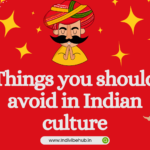India, a land rich in cultural diversity, has a tapestry of traditions woven into its weddings. Among these, “kanyadan” ceremony holds a special place in Indian weddings , embodying more than a simple ritual. It signifies the act of giving away the daughter, the bride, to her groom.
What does mean “kanyadan”
In the heart of Indian weddings lies “kanyadan,” a Sanskrit term translating to “giving away the daughter.” This ancient tradition is deeply rooted in Hindu culture, portraying the emotional and spiritual union of two individuals. Under this ceremony, father symbolically ask the groom to accept his daughter as an equal partner.
Origin and History of “Kanyadan”
Kanyadaan, the tradition of giving away daughters in marriage, became popular in the Middle Ages. Unlike the Vedic age that emphasized equality between men and women, there is no mention of this practice in the Vedas or Manusmriti. Rishi Bhrigu and other sages compiled Manusmriti during this period, laying the foundation for modern Hindu laws. Although Manusmriti doesn’t explicitly mention Kanyadaan, its emphasis on male protection led to the emergence of this custom.

Read also Why Indian women celebrates karva chauth
Unfortunately, the Middle Ages saw the rise of Brahmanism, where Brahmins became influential in dictating Hindu social and religious life. They altered ancient texts, compelling couples to stay with parents, contrary to the Vedic tradition. Brahmins promoted Kanyadaan as a way for parents to absolve sins, leading to social issues like dowry and the unnoticed rise of the sati system among Hindus. While sati has been eradicated, strict laws now combat the dowry system.
How the kanyadan ceremony performs
Once the bride enters the wedding arena and exchanges garlands with the groom in the Varmala ceremony, she takes her seat opposite him, facing the sacred fire. The groom extends his right hand, and the bride’s hand is gently placed upon it in a ritual called Hastamilap or Joining of the Hands.

A sacred thread or a piece of red cloth binds their hands, adorned with betel leaves, betel nuts, and flowers. In some traditions, money and a gold coin are also included. During this symbolic union, the bride’s father or both parents may place their hands on top, occasionally pouring Ganga Jal or sacred water over the conjoined hands. Throughout, the priest chants verses praising Kamadeva, the God of Love.
Cultural Significance and Importance of Kanyadan in Indian Weddings
“Kanyadan” is more than just a tradition; it’s a way of showing family connections, cultural heritage, and the shift from one life stage to another.
In simple terms, during “Kanyadan,” the father symbolically says, “I am giving my daughter to you.” This means the groom is now taking on the responsibility of looking after her, like the father did before.
Critiques and Debates Surrounding “Kanyadan”
While Kanyadan has been a big part of Hindu weddings for a long time, some folks think it’s old-fashioned and want to get rid of it. They say Kanyadan makes it seem like women are things or property to be given away and keeps old ideas about men being more important.
But there are others who feel Kanyadan is an important tradition we should keep. They say it’s not about treating women like stuff; instead, it’s a way to celebrate the strong connection between two families and the kindness of a dad who’s happy to let go of his most precious thing. The argument is about whether Kanyadan shows an old-fashioned way of thinking about women or if it’s just a meaningful tradition that highlights family togetherness and a parent’s willingness to make sacrifices.
Diverse Practices Across Indian States
India’s diversity is reflected in the myriad ways “kanyadan” is conducted. In Uttar Pradesh, the ceremony involves the bride’s parents symbolically placing their daughter’s hands into the groom’s, signifying the union. In Gujarat, the tradition of ‘Hasta Milap’ takes place, where the couple’s hands are tied together amidst Vedic chants.

Down south in Kerala, the ritual transforms into ‘Thaali Kettu,’ where the groom ties a golden necklace, or “Minnu,” around the bride’s neck. Maharashtra’s ‘Kankan Bandhne’ adds a unique touch, binding the couple’s wrists with red and green threads. These distinct practices showcase the rich tapestry of customs, reflecting the cultural vibrancy across Indian states.
Conclusion
In the journey of change, we’re at a point where old traditions clash with new ideas. Kanyadaan, an old custom, still happens even though we believe in fairness and question old ways. Girls, who are now educated and independent, challenge this tradition rooted in the past.
As women’s roles change, we need to rethink old customs that don’t fit today’s world. Kanyadaan shouldn’t treat daughters like objects. Instead, we should create ceremonies that show equality, respect, and shared responsibilities.
Let’s replace throwing grains over the head with a celebration of a child’s everlasting love for their parents. The pheras, which once bound couples, can change into a shared journey where both walk side by side, equal partners in life.
As we balance tradition and progress, let’s create our own vows, promises that match modern relationships. Hand in hand, shoulder to shoulder, weddings can be a canvas where couples paint their stories of equality and respect. In these small changes, we have the power to set a standard for a more enlightened future—where our choices shape traditions in our changing society.
Frequently Asked Questions
- Is “kanyadan” limited to Hindu weddings?
- No, while it originated in Hindu culture, variations of “kanyadan” can be found in other Indian communities.
- How has the meaning of “kanyadan” evolved over time?
- The meaning has evolved to reflect changing societal values, moving beyond a one-dimensional interpretation.
- Do all brides and families embrace the tradition of “kanyadan” willingly?
- Perspectives vary; some embrace it with enthusiasm, while others may approach it with mixed feelings.
- Can “kanyadan” coexist with modern values?
- Many argue for a balance, adapting the tradition to align with contemporary ideals of equality.
- What role does “kanyadan” play in shaping familial relationships?
- “Kanyadan” can influence relationships, contributing to the dynamics between in-laws and the newlywed couple.




Pingback: Things You Should Avoid in Indian Culture: A Guide to Cultural Etiquette - indivibehub.in
Pingback: 15 Indian Wedding Rituals: An Immersive Experience - indivibehub.in
I don’t think the title of your article matches the content lol. Just kidding, mainly because I had some doubts after reading the article.
Enjoyed reading this, very good stuff, regards.
Can you be more specific about the content of your article? After reading it, I still have some doubts. Hope you can help me.
I don’t think the title of your article matches the content lol. Just kidding, mainly because I had some doubts after reading the article. https://accounts.binance.com/en-ZA/register-person?ref=JHQQKNKN
Your posts stand out from other sites I’ve read stuff from. Keep doing what you’re doing! Here, take a look at mine YR4 for content about about Web Development.